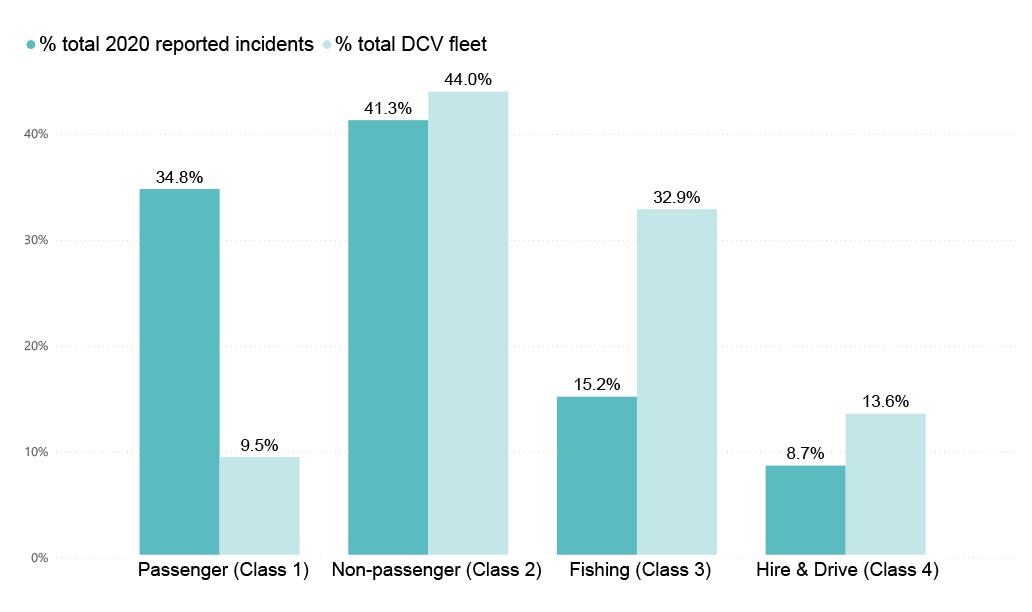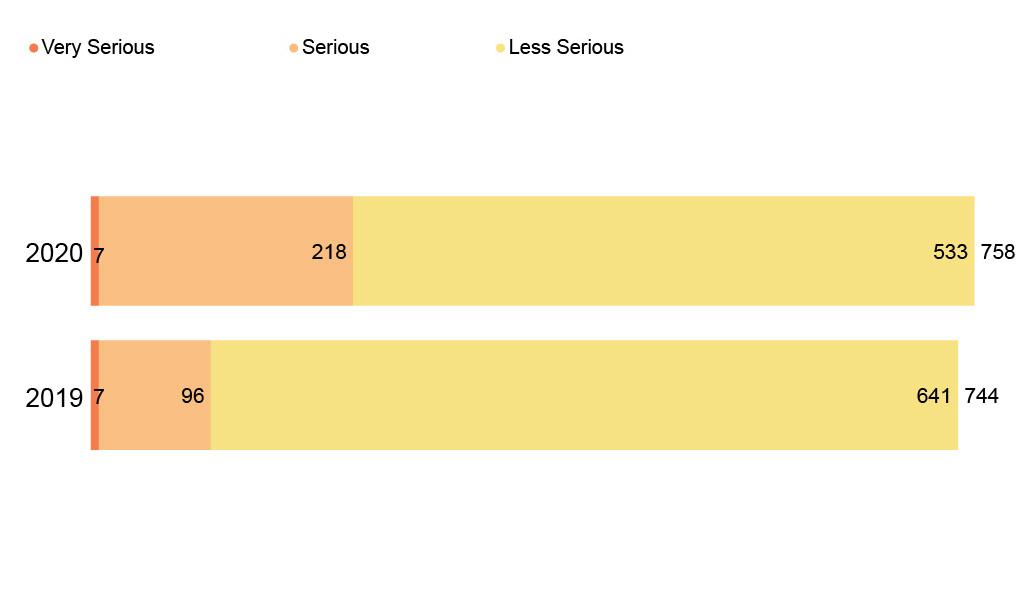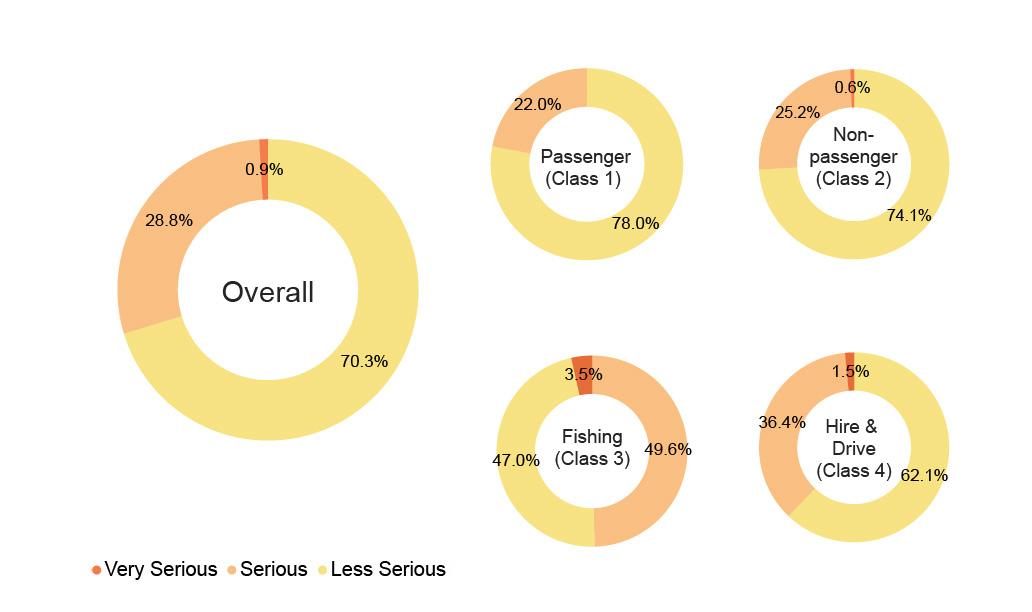In 2020, 758 marine incidents involving DCVs were reported to AMSA.
This represents a slight increase of 1.9% in the total number of incidents reported in 2019 (744 reports).
Each month AMSA publishes a summary of very serious and serious incidents reported that involve DCVs. This published information includes a brief description of the incident.
These are published on the AMSA website here.
Incident reporting trends by vessel class
Comparing the last two annual reporting periods (2019 and 2020) there were fewer reported incidents from passenger vessels (class 1) and more from non-passenger vessels (class 2) in 2020 when compared to 2019.
The impact of COVID-19 and subsequent reduction in passenger vessel operations during this period may have impacted reporting rates in 2020.


Reporting by vessel length
The data also suggests that operators of larger vessels (>24m) report proportionally more incidents than those of vessels <=24m in length. For vessels over 45 metres in length, 25.8% of the fleet submitted at least one incident notification in 2020.

Incident trends by severity
Marine incidents are classified by AMSA into one of three severity levels which include:
- Very Serious;
- Serious; and
- Less Serious incidents.
While the total number of incidents reported were similar in each year, there was an increase in the number of very serious and serious incidents from 103 in 2019 to 225 in 2020.

In 2020, the proportion of less serious incidents was 70.3% in relation to all incidents reported (Figure 9). This represents a decrease in the proportion of less serious incidents reported in 2020 when compared to 86.2% of the incidents reported in 2019.
Fishing vessels (Class 3) reported a much higher proportion of very serious and serious incidents (53.1%) than any other class of vessel. This was also an increase from 2019 when only 21.5% of incidents reported by Class 3 vessel were very serious or serious.

Incident reporting is well accepted as a method that provides data for improving safety and is one of the most widespread safety improvement strategies used. However, there is a need to improve marine incident reporting rates across the fleet. Feedback from industry stakeholder groups identified a number of barriers to reporting with lack of awareness, knowledge and understanding of reporting; fear of punishment; organizational size, and ease of reporting cited as some examples.
AMSA is working with industry and will commence an education campaign focusing on incident reporting to increase awareness in this area with the intent of improving incident reporting culture in this sector.